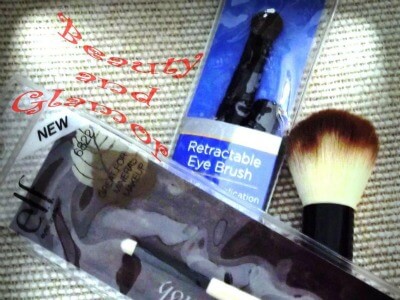
This is the sixth in a series of articles on synthetic fibers and how they relate to shaving brushes, including a brief history of synthetic fibers, their development, stagnation, and resurrection in the market place. We are now at a time when canned shaving lather was king. Cartridge razors had also effectively reduced non cartridge razors to a very small segment of the shaving market. In the mean time, we have had a completely unrelated market in the paint industry continue to develop synthetic materials. The need was to make brushes suitable for latex paint in which natural hairs could not be used based on performance characteristics. Now at the time there was a flagged synthetic bristle that can apply new forms of paint smoothly and evenly. That was excellent news for the painting industry, but what would that have to do with shaving brushes? The fibers for paint brushes are too large and do not retain liquids well for a long enough length of time. In addition, they would be almost as uncomfortable as the fishing line nylon brushes of the past. Few people in the developed world desired natural shaving brushes, much less a synthetic one. Here is where the demand of another market will step in to continue the development of synthetic fibers.
The cosmetic brush industry for centuries has used natural fibers just like the shaving brush realm. Some of the hairs that have been used historically to make cosmetic brushes are: Badger, Squirrel, Pony (Horse), Goat, Kolinsky Sable, Red Sable, Common Sable, Weasel, and Bristle (Boar). [1] There are some major differences between the cosmetic brush market and the shaving brush market in terms of sales volume. The first being that the shaving brush is singular in function and application versus the cosmetic brush, which has multiple brush types to serve multiple functions. Some examples of the various types of cosmetic brushes are: Foundation Brush, Concealer/Camouflage Brush, Duo Fibre Brush, Powder Brush, Blusher Brush, Face Contour Brush, Eye Shadow Brushes, Eyeliner Brushes, Smudger Brush, Eyebrow Brushes and the Lip Brush. [2]
As you can see that is a wide variety of brushes for daily use in the cosmetic realm versus the singular use shaving brush. In the period of time from 1950 to 1980, while the users of shaving brushes collapsed due to the introduction and adoption of canned shaving cream, the opposite occurred in the cosmetic brush industry. During that time period, the demand for cosmetic brushes increased dramatically due to population growth, strong advertising campaigns, and the increasing numbers of women entering the work force. Women began to have more discretionary income in the United States, Europe, Japan, and soon other developing countries would begin to see dynamic growth in demand for these products. All that growth would begin to cause some concern in the mind of manufacturers based upon the sustainment of natural fibers for production. Disease and quarantine of animals, over harvesting, and even political instability could cause disruptions, or even elimination of supplies as United States producers incurred during the late 1930s and throughout World War II as discussed earlier in Part 2 of this series.
So again, synthetics were proposed as an alternative set of fibers, especially for the lower priced and lower profit margin cosmetic brush lines. The problem of quality and the lack of synthetic fibers that could mimic many of the characteristics of natural hairs in terms of product retention and application. It was clear that the brush that could apply paint to a wall would not be desired in applying makeup to a very demanding group of cosmetic brush users. The synthetic fibers would have to feel soft and provide differing types of thickness, backbone, and density to apply each different product as the natural fibers that would be replaced. This would require a new set of structural designs on the fiber itself to change the characteristics to allow for liquids, creams and even solids (powders) to be retained on brush fibers that would have to serve on a variety of design patterns. The cosmetic industry would pave the way for these new designs in the 1980s based on demands caused by expected population growth and new methods of applying cosmetic products. These developments will be discussed in future installments of this series.
[1] http://www.a-squirrel.com/makeup-sable-goat-hair.html
[2] http://www.justmakeupartists.com/articles/types-of-makeup-brushes-their-uses

Here are the links to the other articles in this series.
https://sharpologist.com/2012/09/synthetic-fibers-a-historical-perspective-and-how-they-relate-to-shaving-brushes-part-1.html
https://sharpologist.com/2012/09/synthetic-fibers-a-historical-perspective-and-how-they-relate-to-shaving-brushes-part-2.html
https://sharpologist.com/2012/09/synthetic-fibers-a-historical-perspective-and-how-they-relate-to-shaving-brushes-part-3.html
https://sharpologist.com/2012/09/synthetic-fibers-%E2%80%93-a-historical-perspective-and-how-they-relate-to-shaving-brushes-part-4.html
https://sharpologist.com/2012/10/synthetic-fibers-part-5.html
https://sharpologist.com/2012/10/synthetic-fibers-part-6.html
https://sharpologist.com/2012/10/synthetic-fibers-a-historical-perspective-and-how-they-relate-to-shaving-brushes-part-7.html
https://sharpologist.com/2012/10/synthetic-fibers-a-historical-perspective-and-how-they-relate-to-shaving-brushes-part-8.html
https://sharpologist.com/2012/11/synthetic-fibers-a-historical-perspective-and-how-they-relate-to-shaving-brushes-part-9.html
https://sharpologist.com/2012/11/synthetic-fibers-a-historical-perspective-and-how-they-relate-to-shaving-brushes-part-10.html
Thanks for the continuation Gary! Looking forward to more!
Comments are closed.